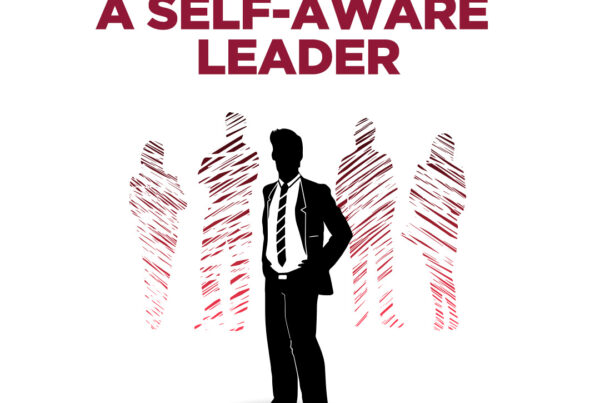
In the dynamic arena of public speaking, confidence transcends being a mere accessory; it’s the cornerstone of effective communication. This elusive trait often marks the difference between a speaker who captivates and one who merely communicates. Yet, the challenge of exuding confidence is a common struggle, even among experienced speakers. This blog delves into the heart of this challenge, aiming to demystify the mechanics of confident speaking. We bring to the forefront a collection of actionable, evidence-based strategies. From understanding the nuances of body language to mastering the rhythm of speech, these insights are designed to empower speakers across all levels. Whether addressing a boardroom or a banquet hall, the journey from nervousness to confidence is a transformative process. Our focus is not just on what you say but also on how you say it, creating a holistic approach to public speaking that resonates with authority and authenticity.
Cultivating a Powerful Presence
Cultivating a powerful presence on stage is not merely about what you say but also how you say it. The subtleties of body language play a pivotal role in how an audience perceives and connects with a speaker. An open posture, devoid of barriers between the speaker and the audience, speaks volumes of confidence and approachability. This can be achieved by keeping arms uncrossed and palms visible, signaling openness and receptivity.
Moreover, the strategic use of gestures can significantly enhance the impact of your message. Gestures are not mere embellishments; they are powerful tools that, when aligned with your words, can reinforce your points and captivate your audience. Studies show that speakers who effectively integrate hand movements into their presentations appear more engaging and confident.
However, it’s not only about what you do with your arms or hands; your entire physicality contributes to your presence. The way you move across the stage, the manner in which you hold your head, and even the subtleties of your facial expressions collectively build an image of assurance and credibility.
Balancing these elements requires practice and self-awareness. Recording and reviewing your presentations can be an invaluable method for observing and refining your physical presence. As you grow more conscious of your body language and its impact, you can begin to mold it deliberately, transforming your presence into one that resonates with confidence and authority.
In essence, the journey to cultivating a powerful presence is ongoing. It’s about aligning your physical expression with your message, ensuring that your body speaks as eloquently as your words, thereby creating a harmonious and impactful delivery.
Mastering Eye Contact
Mastering eye contact is an art form crucial to effective public speaking. It’s not just about looking someone in the eyes; it’s about forging a connection with your audience creating a sense of engagement and trust. Research underscores the power of eye contact in communication: it can convey honesty, confidence, and command attention.
To begin, it’s important to understand that eye contact should be natural, not forced. The aim is to establish a connection with individuals in the audience, not to intimidate or stare. This involves a delicate balance of looking at different parts of the audience, ensuring inclusivity.
One practical technique is to divide the room into sections and make eye contact with each section periodically. This approach ensures that all parts of the audience feel addressed. Remember, eye contact is not about locking gazes with a single person but rather about connecting with the audience as a whole.

However, mastering this skill requires practice. A recommended exercise involves rehearsing in front of a mirror or recording your practice sessions. This allows you to observe and adjust your eye contact patterns. Another effective method is practicing with a small, familiar audience and seeking feedback on your eye contact habits.
Lastly, it’s crucial to balance eye contact with your content delivery. While maintaining eye contact is important, it should not detract from the natural flow of your speech. The aim is to enhance your connection with the audience while confidently delivering your message.
Vocal Power – Tone and Clarity
In the sphere of public speaking, vocal power – encompassing tone and clarity – is indispensable. The tone of your voice sets the emotional atmosphere of your presentation, while clarity ensures your message is comprehended without effort. A commanding yet approachable tone can significantly bolster the impact of your words. It’s not just what you say; how you say it can dramatically alter the audience’s perception and engagement.
To harness this power, one must first be aware of their natural speaking voice. This involves understanding your voice’s pitch, volume, and timbre. Adjusting these elements to suit the context and content of your presentation can enhance the overall impact. For instance, a lower pitch often conveys authority and seriousness, while varied intonations keep the audience engaged.
Clarity, on the other hand, involves articulating words precisely and choosing language that resonates with your audience. It’s about striking a balance between sophistication and simplicity. Speakers should practice enunciating clearly, especially in critical parts of their speech, to ensure that every word is understood.
Moreover, vocal variety – changing the pace, pitch, and volume – can add dynamism to your speech. A monotone delivery risks losing the audience’s attention, while a varied vocal style can emphasize key points and keep the audience engaged.
Ultimately, mastering vocal power requires mindful practice. Recording oneself and seeking feedback can be instrumental in identifying areas for improvement. Just as a musician fine-tunes their instrument, a speaker must refine their vocal delivery to effectively convey their message and captivate their audience.
Content Mastery
Content mastery is a crucial element of public speaking, forming the backbone of a confident delivery. This mastery goes beyond mere memorization. It’s about developing a deep understanding of your topic, which in turn breeds confidence. When a speaker is intimately familiar with the material, it shows. They can navigate through their presentation with ease, making adjustments as needed to engage with their audience more effectively.
A key aspect of content mastery is structuring your material in a coherent, logical manner. This organization aids in recall and allows the speaker to flow from one point to the next seamlessly. It also enables the speaker to handle unexpected questions or interruptions gracefully.
Incorporating storytelling into your presentation can also enhance content mastery. Stories are not only memorable, but they also allow the speaker to convey complex ideas in a relatable and engaging way. When a speaker uses stories effectively, they can connect with their audience on an emotional level, making the content more impactful.
Additionally, rehearsal is paramount. It’s not just about rehearsing to remember the content but also about rehearsing to understand and own it. This might involve presenting to a mock audience or using tools like recording your presentation to refine your delivery.
Ultimately, content mastery is about making the material a part of you so that during your presentation, you’re not just reciting facts or figures but sharing knowledge with confidence and authority.
The Art of the Pause
The art of the pause in public speaking is a powerful tool, often underestimated in its ability to enhance a presentation. A well-timed pause can create emphasis, giving the audience a moment to absorb the information, and it can also be a tool for the speaker to regain composure and gather thoughts.
Pauses can be strategically placed before important points, making the audience anticipate what comes next. This technique not only heightens the impact of the message but also allows the speaker to control the rhythm and pace of the presentation.
Furthermore, pauses can replace filler words, which often creep in when a speaker is trying to think on their feet. By consciously using pauses instead of fillers, the speaker appears more thoughtful and composed.
Mastering the art of the pause requires practice and awareness. It involves understanding the nuances of your speech and recognizing the moments where a pause could enhance understanding or emphasis. By integrating thoughtful pauses, a speaker can elevate their delivery from simply conveying information to creating an engaging, memorable experience for the audience.
Conclusion
In conclusion, the journey to becoming a confident public speaker is a path of continuous learning and practice. The strategies discussed – from honing body language and eye contact to mastering vocal power and content to the strategic use of pauses – are not just techniques but powerful tools to enhance your presence and impact. Remember, confidence in public speaking is not an innate trait but a skill that can be developed and refined. As you integrate these principles into your speaking engagements, you’ll find yourself not only communicating more effectively but also connecting with your audience in more meaningful ways. The power of your presence, coupled with the strength of your ideas, will create a lasting impression. Keep practicing, refining, and evolving as a speaker, and the stage will become a place of empowerment and influence.
FAQ
How can I quickly improve my public speaking skills?
Start by practicing in a comfortable setting, focus on clear articulation, and get familiar with your material. Watching recordings of yourself can be incredibly helpful in identifying areas for improvement.
Are there any exercises to help with nervousness before speaking?
Yes, deep breathing exercises and visualization techniques can reduce anxiety. Practicing mindfulness and positive affirmations can also be effective.
How important is body language in public speaking?
Very important. Body language can convey confidence and engage the audience. Maintaining an open posture and using purposeful gestures are key aspects.
Can public speaking skills impact professional success?
Absolutely. Effective public speaking can enhance your ability to communicate ideas clearly, influence others, and present a confident image, all of which are valuable in professional settings.
How long does it take to become a confident public speaker?
It varies depending on the individual. Regular practice, receiving feedback, and learning from each experience are essential. With consistent effort, noticeable improvement can be achieved over time.




